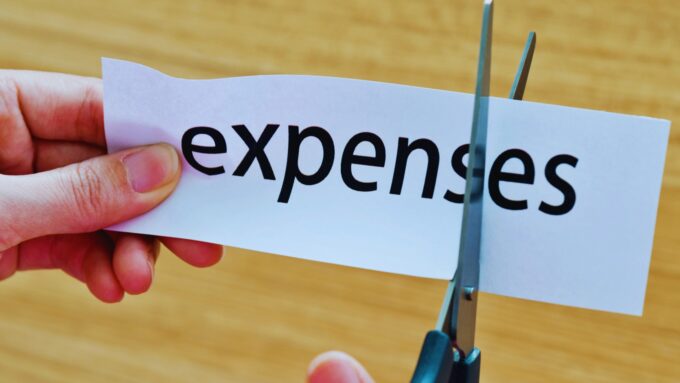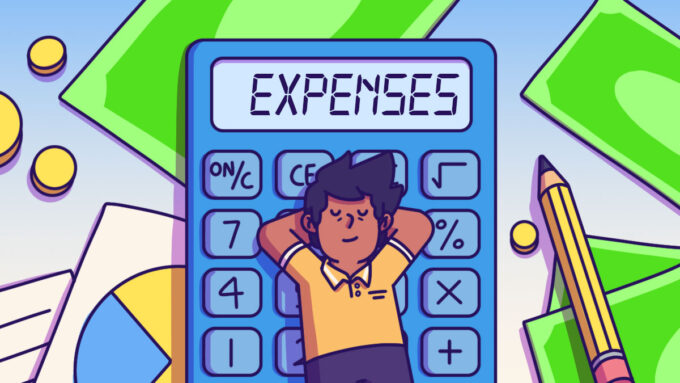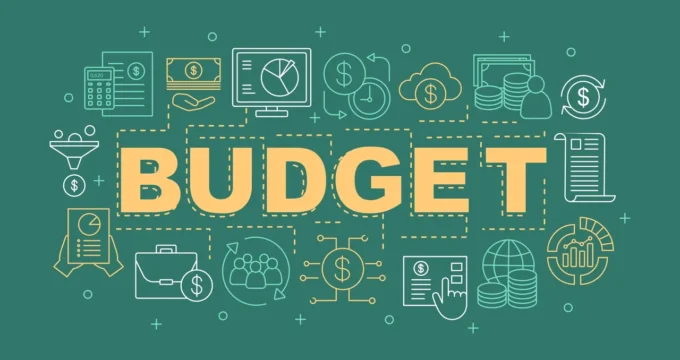Proper money management will be the greatest way to gain financial stability and strive toward fulfilling your life goals. Whether you’re saving for a down payment on a house, planning for retirement, or just trying to make ends meet, budgeting is key. In Canada, where the cost of living is often high, and surprises can pop up at any time, knowing how to budget your money will help you stay on track financially.
This blog will walk you through real steps on budgeting your money, the main budgeting strategies, and financial planning tips that can help you eventually take the helm of your finances.
Why Budgeting Matters in Canada

Before outlining how to budget, it is important to understand why budgeting is a must for all Canadians. Indeed, with climbing housing costs, groceries, and even utilities, managing one’s expenses is a difficult feat in itself. A proper budget will enable one to take control of:
- Track your expenses: You will know where your money went if you keep track of your expenses.
- Achieve financial goals: Saving for a vacation, paying off debt, or building an emergency fund is more within their reach because of a planned budget.
- Avoid debt: Budgeting will enable you to avoid overspending than you earn, thus avoiding debt.
- Supports long-term planning: A budget is prepared to plan for the future. Saving for college, a first house or retirement would be examples.
Step 1: Assess Your Financial Situation
The beginning of learning about the budgeting process is to know the current financial situation. It involves knowing one’s income, expenses, savings, and debts. Take the time to gather all the financial information.
- Income: Income is the total sum of income available during the month. Sources of income would include salary, freelance, investments, and government benefits. Never forget to use income after tax since this is only one take-home amount you will receive.
- All your expenditures: Note down all your monthly expenditures. It may include those fixed costs like rent, utility bills, and car payments. Then there will be variable costs related to groceries, dine-outs, and entertainment.
- Savings: think of all savings contributions you regularly make into, for example, payments on a Registered Retirement Savings Plan (RRSP), Tax-Free Savings Account (TFSA), or other investment accounts.
- Liability/Debts: Add all unpaid debt-whether it’s student loans, credit cards, personal loans, or any other type of debt. It will come in handy for creating a good financial plan.
Step 2: Categorize Your Expenses

To budget money properly, you have to categorize your spending. This can help you to see where your money is going and where you may be overspending. Common categories include:
- Housing: Rent or mortgage payments, utilities, property taxes.
- Transportation: Car payments, insurance, fuel, public transit.
- Food: Groceries, dining out, takeout.
- Debt repayment: Student loans, credit card payments, personal loans.
- Savings and investments: Contributions to savings accounts, RRSPs, or TFSAs.
- Entertainment and leisure: Hobbies, gym memberships, streaming services.
- Health and insurance: Health insurance, dental care, life insurance.
- Miscellaneous: Gifts, charity donations, or any other non-regular expenses.
By categorizing your expenses, you can better understand your spending habits and find areas where you may need to make adjustments.
Step 3: Set Financial Goals
A critical part of learning how to budget money is setting financial goals. Financial goals can endow your budget with meaning, and such goals can drive the spending priorities in your life.
- Short-term (0-2 years): Saving for a vacation, building an emergency fund, or paying off a small debt.
- Medium-term (2-5 years): Saving for a down payment on a house or a new car.
- Long-term (5+ years): Retirement planning, paying off your mortgage, or funding your child’s education.
Other milestones specific to Canada would be contributions to an RRSP or RESP for your children. You set clear goals and know what you are working toward; therefore, you tend to stick to your budget.
Step 4: Choose a Budgeting Method
There is no one-size-fits-all budgeting approach, so you will need to find a budgeting approach that would resonate well with your lifestyle and financial situation. Here are some of the most popular methods to consider:
The 50/30/20 Rule
This simple budgeting rule divides your after-tax income into three categories:
- 50% for needs: Essential expenses such as housing, utilities, and groceries.
- 30% for wants: Non-essential expenses like dining out, entertainment, and hobbies.
- 20% for savings and debt repayment: Allocating money toward your savings goals and paying off debts.
The 50/30/20 rule is ideal for those who want a straightforward way to budget their money without getting into the details of individual expenses.
Zero-Based Budgeting
Zero-based budgeting requires that you attach every penny of your money to an identified category so that income minus expenses equals zero. The approach allows one to ensure that all the money is accounted for and that expenditure meets priority financial order. This continues to be one of the most widely used methods among those who are proactive in their finance planning.
Envelope System

The envelope system would take cash and then keep it in envelopes so they can be used within specific categories. For the category, you can’t spend any more until the cash in an envelope is depleted for the month. It is a very seldom used technique nowadays, but it is still very effective with discretionary expenses such as going out to be entertained or dining in.
Pay Yourself First
The “pay yourself first” method emphasizes saving by automatically transferring a percentage of your income into savings before using the remaining amount for other expenses. It will guarantee fulfilling any savings goals while providing you with the cash for other expenses. Especially for those who are not able to save consistently, it is really efficient.
Step 5: Track Your Spending
Track your spending. This is a very important part of budgeting. It gives you an idea of whether you stay within the budget and requires adjustment in case you do not. There are several ways of tracking your spending.
- Budgeting apps: Use apps like Mint, YNAB (You Need a Budget), or PocketGuard to monitor expenses automatically.
- Spreadsheets: Create a budgeting spreadsheet to track your income and expenses manually.
- Bank alerts: Set up alerts with your bank to notify you when you’re close to reaching your budget limit in certain categories.
You would then track the expenses and find out where adjustments may be necessary to be on track with the financial planning. For instance, you will realize that eating out is costlier than allocated, so you can then cut that for the next month.
Step 6: Make Adjustments to Your Budget
Budgeting is not a one-time activity; you have to take your budget, look at it, and amend it for the betterment of either your income or even expenses. End Review your expenditures at the close of every month to know whether you have been maintaining your budget or not. In case you haven’t, then try to find out where the mistake occurred so that you can rectify it in the subsequent budget.
Now, say that your grocery bill has gone beyond what you expected because of the rising food prices. You could trim the less important expenses or continue learning how to reduce grocery spending, maybe using coupons or buying in bulk.
Step 7: Plan for Irregular and Unexpected Expenses

In Canada, budgeting may include provisions for such unexpected expenditures as car repairs, medical bills, or home maintenance. To provide for these expenditures, create a special savings fund that is dedicated solely to emergencies. You should save at least three to six months’ worth of living costs in the emergency fund. This will enable you to absorb the costs of unexpected expenditures without upsetting your budget.
For non-emergency irregular expenses, which periodically occur (such as annual car insurance premiums or holiday gifts), create a “sinking fund.” This fund lets you put aside a modest monthly amount that will be there when you need it.
Step 8: Take Advantage of Financial Planning Tools in Canada
Canadians have access to several financial planning tools and resources that can help with budgeting:
- RRSPs and TFSAs: Both are tax-advantaged savings accounts that help you save for retirement or other long-term goals.
- RESPs: For parents, contributing to an RESP helps save for their child’s education and takes advantage of government grants.
- Budgeting apps: Apps such as Mint, YNAB, and Wealthica offer features tailored for Canadians, including automatic currency conversion and integration with Canadian banks.
Using these tools can help you stay on top of your financial goals and make budgeting more manageable.
Step 9: Involve the Whole Family in the Budgeting Process

Those with dependents, such as children and spouses, must involve all members of their families in budgeting. Talking about family finances with your spouse and even your children can help them understand some of the family goals about finance and, consequently, shared responsibility. For example, encouraging a child to save while still young can help them obtain financial success throughout their lives.
Then, when one’s partner is okay with the budget, it is less challenging to work alone since you are working towards one objective.
Step 10: Avoid Common Budgeting Pitfalls
To effectively budget your money, watch out for common mistakes that can derail your financial planning:
- Underestimating expenses: Make sure you account for all regular and irregular expenses in your budget.
- Not updating your budget regularly: Adjust your budget to reflect changes in income or spending.
- Setting unrealistic goals: Start with small, achievable financial goals and gradually increase them as you progress.
- Failing to reward yourself: It’s important to celebrate your progress by allowing for occasional treats within your budget.
Practical Tips for Canadians to Save Money

Here are some money-saving tips to make budgeting easier in Canada:
- Using cashback applications: You will use applications like Rakuten and Checkout 51 to obtain cashback on purchases you make regularly.
- Minimize housing costs: If necessary, scale down, sublet part of your house, or even refinance a mortgage.
- Slice utility bills: Use programmable thermostats, seal windows, and opt for energy-efficient appliances to reduce energy consumption.
- Buy generics: Purchasing generic brands rather than the name brand often cuts your grocery spending significantly.
- Use public transit: Public transportation is much cheaper than owning a car, at least in very populous centers like Toronto or Vancouver.
How Budgeting Can Help with Long-Term Financial Planning
Budgeting is more than just managing your day-to-day expenses; it’s about setting the stage for long-term financial success. By budgeting effectively, you can:
- Plan for retirement: Regular contributions to RRSPs and TFSAs can help ensure you have enough savings when you retire.
- Pay off debt faster: A budget helps you allocate more funds toward debt repayment, reducing interest payments.
- Prepare for major life events: Whether it’s buying a home, sending your children to university, or starting a business, budgeting makes it easier to achieve significant financial milestones.
Conclusion: Start Budgeting Your Money Today
Learning how to budget one’s money can be a very important step toward financial stability and the realization of life goals in Canada. There is no doubt it does not come easily, but with the right strategy, tools, and commitment to regular financial planning, anyone can take control of their money and decide wisely what will create profit for them in the long run.
Be it by knowing your financial position, setting achievable goals, and choosing a budgeting system that suits you well; thus, start by tracking how you spend your money, making necessary adjustments, preparing for the uncertain future, and other expenses, such as entertainment costs. Involve your family in budgeting to avoid some common pitfalls on the way.
In fact, budgeting is a never-ending process. You are going to take these small steps today toward building a solid foundation for a secure financial future.









